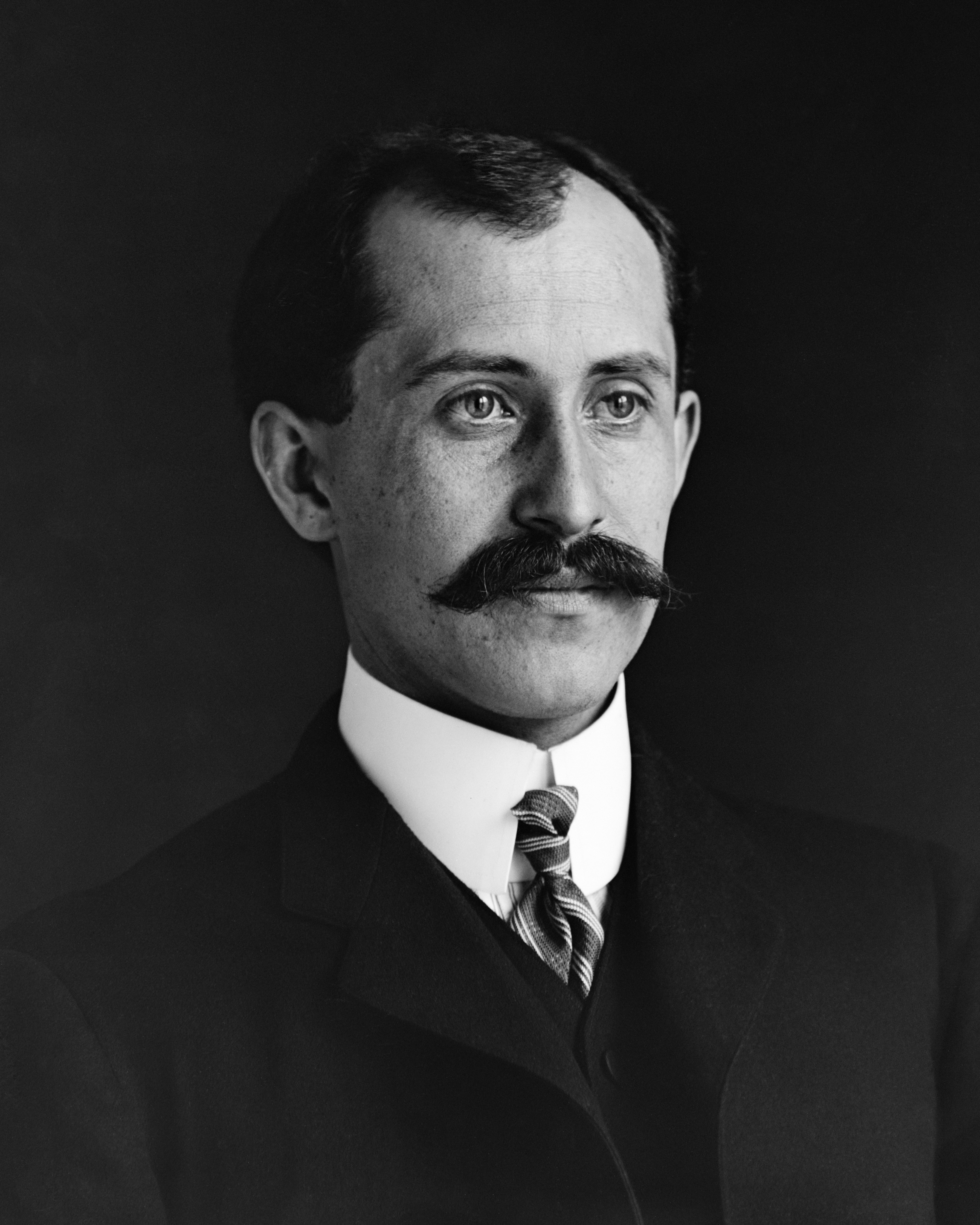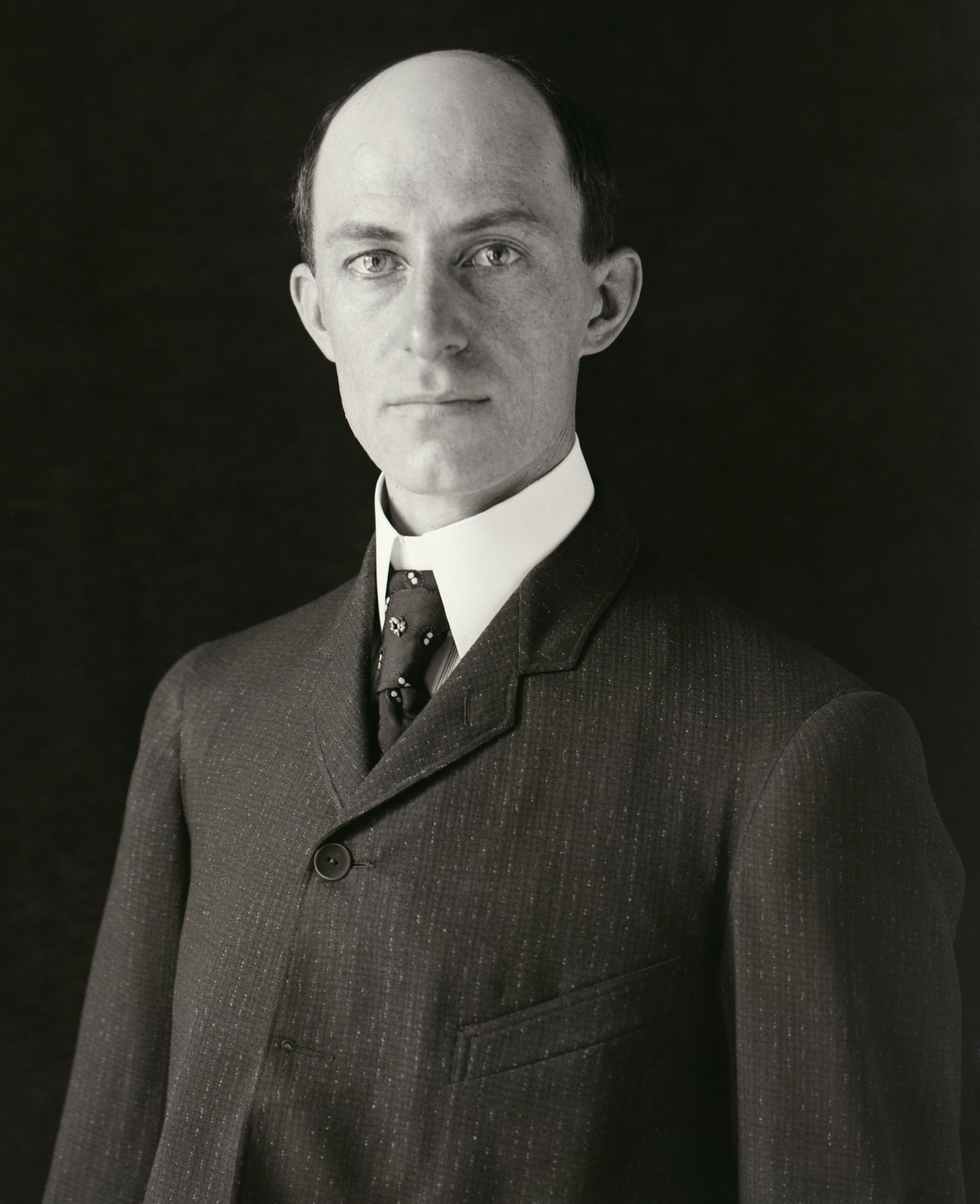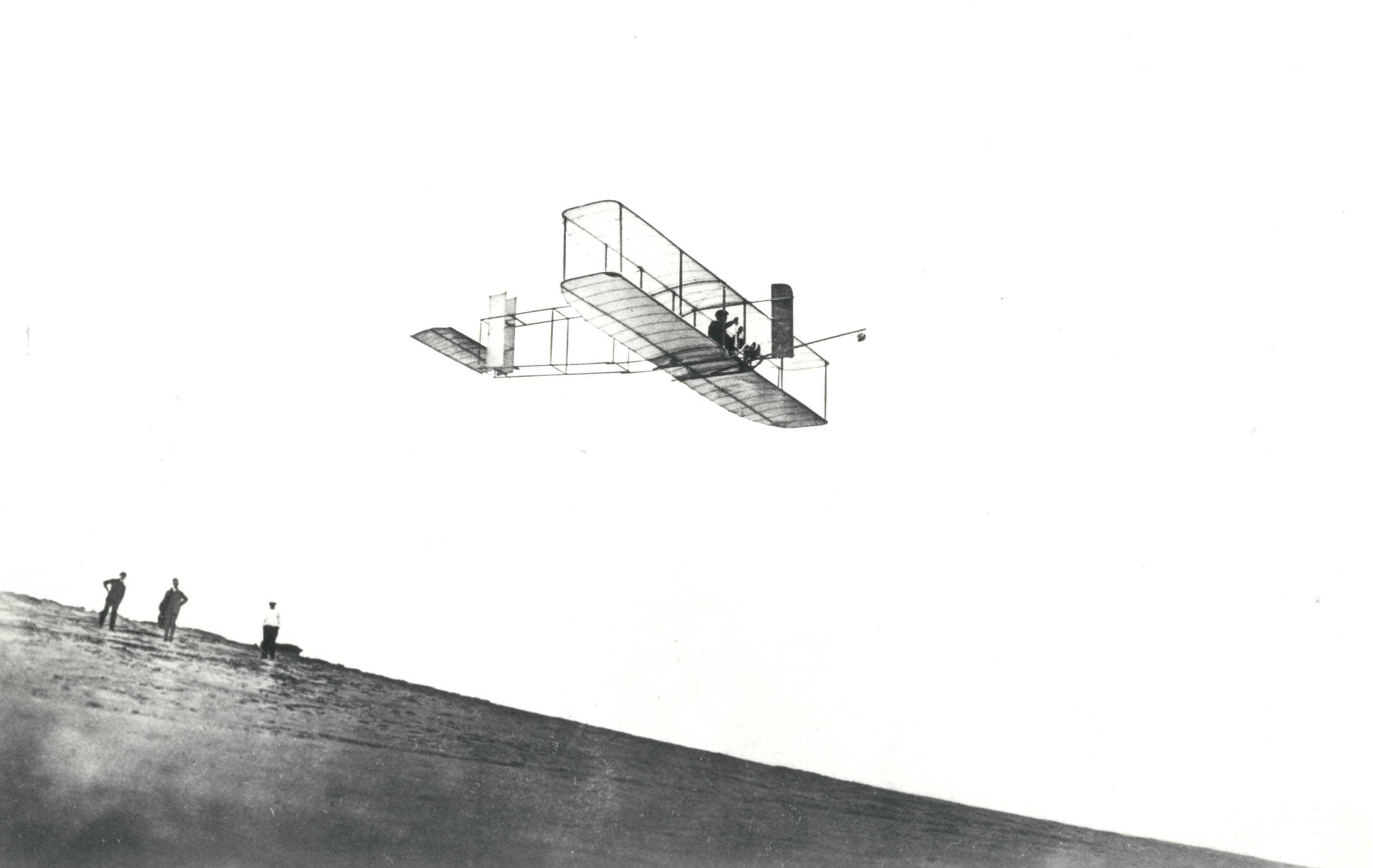Wright brothers invented and built the first successful airplane. The brothers were Wilbur (1867-1912) and Orville (1871-1948). On Dec. 17, 1903, they made the world’s first controlled flight in a machine that was piloted, power driven, and heavier than air. They flew this airplane—called the Flyer—near Kitty Hawk, North Carolina. With Orville at the controls, the plane flew 120 feet (37 meters) on the first flight. It stayed in the air 12 seconds. The brothers made three more flights that day. The longest, by Wilbur, was 852 feet (260 meters) in length and lasted 59 seconds.
Loading the player...First successful airplane flight
For years afterward, most people knew nothing of the Wright brothers’ achievement. A few newspapers reported on the Wrights. But the stories were often inaccurate. Many people at the time doubted that flying machines could even exist.
In any case, the Wrights preferred to work quietly, perfecting their airplane and developing flight technique. By 1905, they had created a practical flying machine that could travel dozens of miles. Every modern airplane is based on the Wright brothers’ invention and the principles of flight they discovered.
Early life

Wilbur was born April 16, 1867, on a farm 8 miles (13 kilometers) from New Castle, Indiana. Orville was born Aug. 19, 1871, in Dayton, Ohio. Their father was a bishop of the United Brethren Church. The boys attended high school . But neither received a diploma. Wilbur did not bother to attend graduation ceremonies. Orville took special subjects rather than a set course in his final year.
The subject of mechanics fascinated the Wrights even as children. Their mother encouraged them to experiment and to learn as much as they could on their own. Orville started a printing business in 1889. He built his own press. The Wrights later launched a weekly paper, the West Side News. Wilbur served as editor. He was age 25 and Orville 21 when they began to rent and sell bicycles. Then they began to manufacture bikes. They assembled the machines in a room above their shop.
Gliding experiments

After reading about the death of glider pioneer Otto Lilienthal in 1896, the brothers became interested in flying. They began studying the subject in 1899. They soon became familiar with all the scientific knowledge of aeronautics then available. The most important problem to solve, they thought, was how to control an airplane in flight. In 1899, the brothers built a kite to test ideas for control. Then they decided to build a full-sized glider.
Early gliders.
The Wrights experimented with gliders on a narrow strip of sand called Kill Devil Hills near Kitty Hawk. In 1900, they tested their first glider. It measured 16 feet (5 meters) from wing tip to wing tip.
The brothers returned to Kitty Hawk in 1901 with a larger glider. They showed that they could control the craft’s balance from side to side by tilting the tips of the right and left wings at different angles to the wind. But their wings did not generate enough lifting force.
Piloted glider.
The Wrights concluded that all published tables of air pressures on curved surfaces must be wrong. They set up a 6-foot (1.8-meter) long wind tunnel in their shop. The brothers tested more than 200 model wings in the tunnel. From the test results, the brothers created the first reliable tables of air pressures on curved surfaces. These tables made it possible to design wings that would produce enough lift to support a person’s weight.

The brothers built a third glider and took it to Kitty Hawk in the summer of 1902. With this glider, they solved most of the problems of balance and control in flight. They made nearly 1,000 piloted glides. On some glides, they covered distances of more than 600 feet (180 meters). Their basic patent, applied for in 1903, relates to the control system on the 1902 glider.
Invention of the airplane
By the end of 1903, the Wrights had built a powered flying machine for less than $2,000—about the cost of a new car in 1903. It had wings about 40 1/2 feet (12 meters) long. It weighed about 750 pounds (340 kilograms) with the pilot. The Wrights designed and built their own lightweight gasoline engine for the airplane.
First powered flights.
On Dec. 17, 1903, the Wrights made four successful flights at Kitty Hawk. Their glider experiments had proved the airplane’s design and control system to be sound. The brothers had also become skilled pilots. Their understanding of flight physics and their piloting ability set them apart from most others who tried—and failed—to fly powered airplanes.
Further experiments.
The Wrights continued their experiments at a field near their hometown of Dayton in 1904 and 1905. In 1904, they made 105 flights. The longest two flights lasted five minutes each.
The brothers continued to change and improve the design of their flying machine. Then, on Oct. 5, 1905, the machine flew 24.2 miles (38.9 kilometers) in 38 minutes 3 seconds. The Wrights finally believed they had a practical flying machine they could sell.
Promoting airplane technology
When the Wrights first offered their machine to the U.S. government, they were not taken seriously. But by 1908, they had a contract with the U.S. Department of War for the first military airplane. They also had buyers in Europe. Meanwhile, the brothers resumed experimental flights near Kitty Hawk. Their newest machines could carry two people. Newspapers reported the flights at great length, but not always accurately.
Immediately after these test flights, Wilbur went to France . He made flights to altitudes of 300 feet (90 meters) and more. The flights captivated thousands of people in France. Wilbur made a deal with a French company to construct his machine there.
Exhibitions and accident.
While Wilbur was in France, Orville made successful flights in the United States. On the morning of Sept. 9, 1908, he made 57 complete circles at an altitude of 120 feet (37 meters) over the drill field at Fort Myer, Virginia. He remained in the air for 1 hour 2 minutes. He set several records the same day.
On September 17, however, disaster struck. While Orville was flying at 75 feet (23 meters), a blade of the right-hand propeller struck and loosened a wire of the rear rudder. The wire coiled around the blade and snapped it across the middle. The machine became difficult to control and plunged to the ground. Orville suffered a broken thigh and two broken ribs. His passenger, Lieutenant Thomas E. Selfridge, suffered a fractured skull. Selfridge died within three hours.
This accident was the most serious in the Wright brothers’ career. Orville reappeared at Fort Myer the next year, fully recovered. He completed official tests with no sign of nervousness.
When Wilbur returned to the United States, he made demonstration flights from Governors Island in New York City. He flew around the Statue of Liberty, up to Grant’s Tomb in northern Manhattan, and back.
Wright Company.
In August 1909, the Wrights reached a contract with some wealthy men in Germany. They formed the German-Wright Company. Later that year, they formed the Wright Company in New York City to manufacture airplanes. The brothers earned some money from their companies. But they were troubled by imitators, infringements on their patents, conflicting claims, and lawsuits.
In 1910, the Wrights established a flying school. Students at the school included such famous aviators as Henry H. “Hap” Arnold, Walter Brookins, and Marjorie Stinson. The Wright brothers also formed their own team of exhibition pilots. The team demonstrated their airplane all over the country.
Later life and legacy
Wilbur died of typhoid fever on May 30, 1912. He died just as the airplane was beginning to make great advances. Orville worked on alone. In 1913, Orville won an aviation award called the Collier Trophy. He won the trophy for developing a device called an automatic stabilizer that helps airplanes keep balance. Orville sold his interest in the Wright Company and retired in 1915.
Orville continued work on the development of aviation in his own shop, the Wright Aeronautical Laboratory. In 1929, he received the first Daniel Guggenheim Medal, an aeronautics award, for his and Wilbur’s contributions to flight. Orville died on Jan. 30, 1948.
Wilbur was elected to the Hall of Fame for Great Americans in New York City in 1955. Orville was elected in 1965. They were the first two individuals named to the National Aviation Hall of Fame in 1962.
Orville had sent the brothers’ original plane flown near Kitty Hawk to the Science Museum in London in 1928. The Science Museum returned the plane to the United States in 1948. It is now in the National Air and Space Museum in Washington, D.C. The Kill Devil Hills Monument National Memorial in North Carolina became the Wright Brothers National Memorial in 1953.
